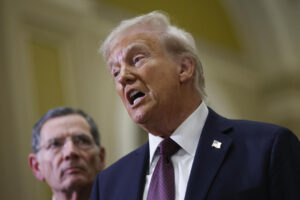Navigating the Complex Terrain of National Debt: Insights for Investors
There’s no denying that Donald Trump is familiar with managing debt. His journey as a real estate mogul has seen its fair share of financial ups and downs, leading to six business bankruptcies. Trump’s strategies—writing off loans, refinancing, sourcing new lenders, and pivoting to different business models—provided him with a roadmap through personal fiscal crises. However, the national debt he will face as the 47th president presents an entirely different challenge.
The Scale of National Debt
As he steps into office on January 20, the U.S. national debt is projected to exceed $36 trillion, a stark increase from $20 trillion at the beginning of his first term in 2017. To put this into perspective, the ratio of debt held by the public to GDP has surged from 75% to a staggering 96%. These numbers are troubling and raise the question: how much longer can the U.S. government continue to borrow without facing real consequences?
It’s crucial for investors to grasp the implications of this burgeoning debt crisis. Unlike personal or corporate debt that can be renegotiated or wiped clean through bankruptcy, public debt operates under a different set of rules. A federal bankruptcy scenario is purely hypothetical, and refinancing isn’t a viable option due to the sheer magnitude of the debts involved.
Market Responses to Increased Borrowing
The markets seem to be signaling that they are not as complacent as before. Following the Federal Reserve’s decision to cut short-term interest rates by a full percentage point since last September, long-term rates have paradoxically risen by a comparable margin. According to Torsten Sløk from Apollo, this is an indicator of underlying concerns around prolonged borrowing patterns by the Treasury. Investors are becoming wary, and borrowing costs across sectors are likely to increase.
As costs rise for everyday borrowing—be it home loans, auto loans, or commercial borrowing—the strain on the economy could become pronounced. Rising borrowing costs will directly impact consumer spending and business investment, both of which are critical for economic growth.
Impacts on Trump’s Agenda
Trump’s national debt dilemma will play a significant role in shaping his administration’s agenda in three key areas:
-
Debt Ceiling Limitations: With the U.S. government already hitting its borrowing limit, Congress will face the contentious task of raising it by late spring or early summer. The climate in Washington suggests turbulent negotiations ahead, with some GOP members advocating for austerity measures, potentially threatening the prospect of a U.S. default. This could create a scenario reminiscent of the near-catastrophe of 2011.
-
Potential Downgrades: The looming debt ceiling negotiations carry the risk of further downgrades in U.S. debt ratings. Standard & Poor’s and Fitch have already made moves to downgrade their ratings following previous standoffs. While these downgrades haven’t yet had dire repercussions on U.S. creditworthiness, the investor community is becoming increasingly jittery, and another downgrade could disrupt market confidence.
- Broader Economic Implications: Investors should be aware that rising debt costs can lead to tighter monetary policy, further constraining economic growth. This could lead to a precarious balancing act for Trump as he navigates his economic agenda and relies on strong growth to justify further borrowing.
Final Thoughts
As the landscape of national debt continues to evolve, investors must keep a vigilant eye on how these dynamics unfold. Understanding the interplay between fiscal policy, borrowing rates, and economic growth will be key to making sound investment decisions. The situation may seem daunting, but with challenges come opportunities—investors who stay informed and adaptable will find ways to thrive amidst uncertainty.
At Extreme Investor Network, we believe in empowering our readers with unique insights that enable them to navigate complex financial landscapes. For deeper analyses and resources, make sure to check back with us regularly as we cover the ongoing developments in national debt and its implications for your investments.

